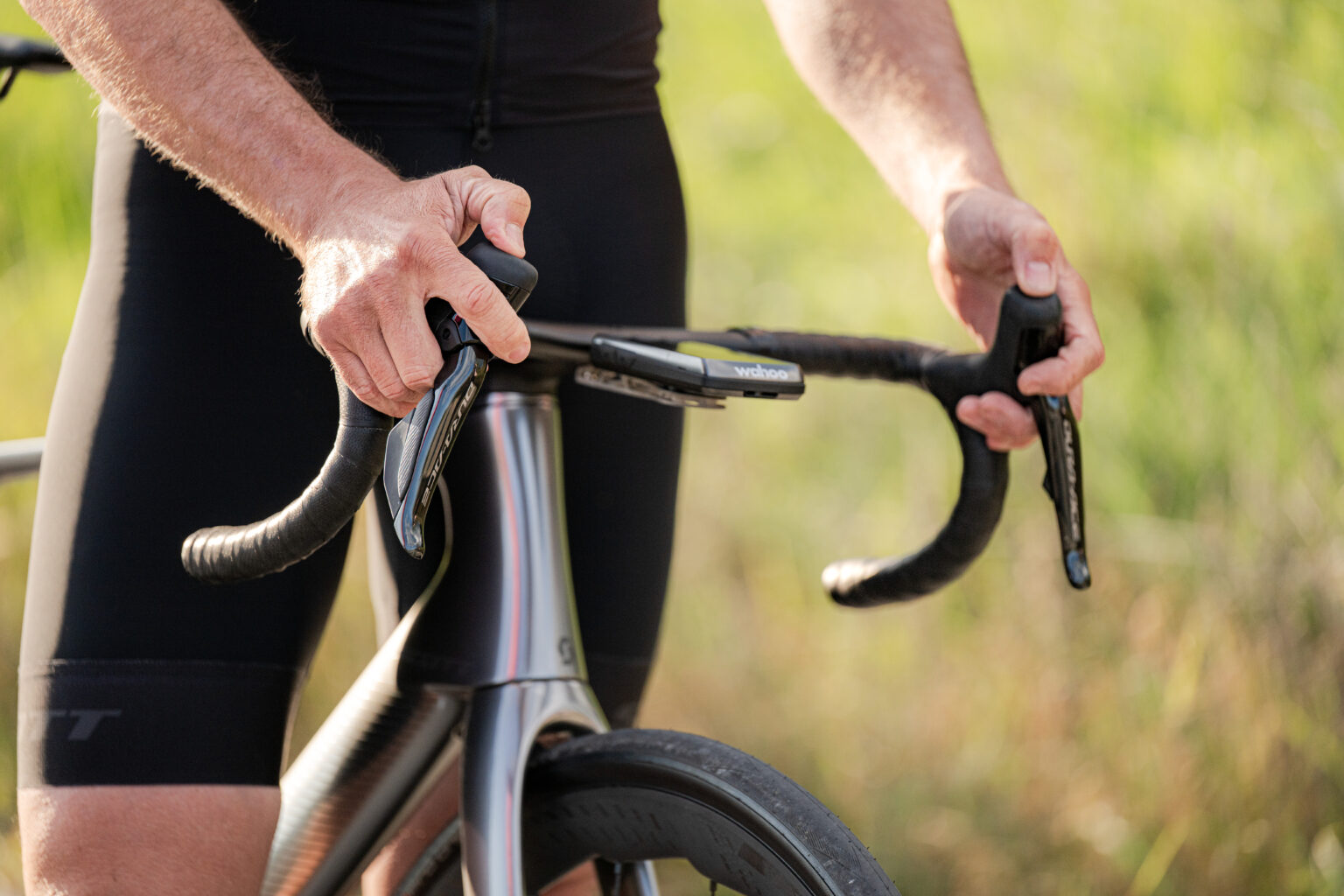Today, Scott introduces its most recent road offering, the Fastlane. On the outside, it appears to be a sleek new road bike: a lightweight carbon frame, aggressive geometry, and clean lines. But, beneath it all, the Fastlane is hiding something.
A TQ HPR40 drive unit, to be exact. Despite first glances, the Scott Fastlane is an e-bike.
Life in the (Scott) Fastlane

A narrow downtube, a nearly regular-sized bottom bracket, and no toptube buttons or screens. There is almost no indication anywhere that the Scott Fastlane is an e-bike at all. That was Scott’s intention when they began the process of designing the Fastlane — a road bike first with a drive unit as a bonus.
But Scott didn’t just build a frame and stick a motor on it. With a combined fork and frame weight of less than three pounds (1,218 grams), the Fastlane is light. It was also designed with aerodynamics in mind, conserving watts. While watt conservation isn’t typically an issue regarding e-bikes, Scott points out that easier watts due to aero gains conserve watt-hours. This means prolonged battery life.
The frame is also designed around 34mm tires, adding a bit of extra confidence on rougher roads. And, as is basically expected with new bikes, the frame is UDH compatible.

Hidden Assist

At the core of the Scott Fastlane is TQ’s new HPR40 drive unit. This latest offering from TQ was announced shortly after the introduction of the new HPR60 motor. Unlike the HPR60, often found on mountain bike platforms, the TQ HPR40 was designed specifically with road and gravel in mind.
The drive unit delivers 200W of assistance and up to 40Nm of torque. The HPR40 helps the Fastlane stay slim. When combined with the 290Wh battery, the entire drive system weighs less than six pounds (~2,700 grams).
TQ also utilizes its Harmonic Pin Ring (hinting at the name, HPR) technology in its drive units. This allows the motor to deliver smooth, consistent power, while remaining whisper-quiet. TQ’s HPR drive units are among the quietest electric assist systems available.



Those wanting a little extra range on their Scott Fastlane can purchase the 160Wh range extender. When using the range extender, the system will recognize the two power sources, draining the range extender before the internal battery.
Once again, priority goes to the main battery during charging. That said, TQ also notes that the HPR40 has a charging time of only three hours.
Integrated Controls

Along with the relatively normal-sized downtube and bottom bracket, the Scott Fastlane helps fly under the e-bike radar with its seeming lack of drive unit controls. There are no display screens or buttons on the toptube, as well as no handlebar-mounted controllers.
Neatly incorporated into the drop bars and acting as a bar plug is TQ’s HPR40 bar-end “display.” Here you will find discrete lights indicating battery percentage and power mode. Riders have three modes to choose from — Eco, Mid, and High — controlled by buttons located on the hoods.


The Scott Fastlane also features a rear light, as well as an option for an easily integrated front light.
Three Scott Fastlane Builds

Scott is offering the Fastlane in three builds. All will share the same HMX carbon frame and features, along with the TQ HPR40 drive unit. Each build will be available in five sizes — ranging from XS to XL — and will feature one or two paint options.
Fastlane Premium
- Shimano Dura-Ace (Electronic Shift System) groupset
- Zipp 353 NSW TL SR 40 Carbon wheelset
- Weight: 9.9 kg (21.83 lbs)
- Color: Chrome Silver
Fastlane 10
- Shimano Ultegra Di2 (Electronic Shift System)
- Syncros Capital 1.0 40 wheels
- Weight: 10.6 kg (23.37 lbs)
- Color: Cumulus White
Fastlane 20
- Shimano 105 Di2 (Electronic Shift System)
- Syncros Capital 1.0 40 wheels
- Weight: 11.1 kg (24.47 lbs)
- Color: Carbon Black / Violet Pink
To see the full build spec and pricing, check out the new Scott Fastlane at scott-sports.com.

